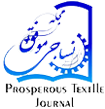Over 600 delegates from 58 countries subscribed to the latest VDMA textile machinery webinar on sustainable dyeing held on February 3rd, 2022 – a record since the monthly online series started in June 2020.
The webinar, entitled ‘Resource-saving in Textile Processing – Continuous Dyeing and Washing’, involved the three companies Monforts, DyStar® and Goller.
In outlining the capabilities of Monforts Thermex hotflue lines for the Econtrol® continuous dyeing process, the company’s Textile Technologies Engineer Jonas Beisel observed that the current industry focus is very much on cleaner processes and products in accordance with the Corporate Social Responsibility (CSR) commitments of the major fashion brands, and with further regulations to be expected.
“It is clear the textile industry has to adjust to this situation through new investments that enable a significant reduction in resource consumption to be achieved, but are easy to integrate into existing production systems, and Econtrol® lines fit the bill,” he said.
Cellulosics
Econtrol® is a continuous process for the dyeing of woven cellulosic fabrics that has already been well proven on the market, with over 150 Monforts Thermex lines already in operation at mills worldwide.
Reactive dyestuffs are fixed into the fabric in a one-step dyeing and drying process with a controlled combination of steam and air. The entire pad-dry process takes just two-to-three minutes at a temperature of between 120-130°C and a relative humidity volume of 25-30%.
“The parameters for fixing reactive dyes are the temperature, the duration and the alkali content, but reactive dyes need a certain temperature in order to be fixed quickly,” Beisel said. “The Monforts solution is to raise the so-called “wet bulb temperature” inside the dyeing chamber with steam. This ensures the surface of the fabric is heated up to a stable temperature of around 68 degrees before being increased as the residual moisture of the fabric is drawn away.”
Benefits
The Econtrol® pad-dry process has a number of immediate benefits. Compared to the common pad-dry-pad-steam process, no salt is used and no steamer is required for a separate fixation step.
Compared to the pad-dry-thermofix process, no urea is used and no smoke or deposits are generated, and unlike with the cold pad batch process, direct feedback of the dyeing results ensures no batching time is necessary and guarantees good reproducibility from the lab to bulk production.
An immediate wash off is also unnecessary, allowing for flexible production planning. The process is suitable for pale to dark shades with very good fastness properties.
Complementary services and systems
Complementing the Monforts presentation during the webinar, Bertram Seuthe, Global Business Development Manager at DyStar, outlined the importance of specific Levafix® /Remazol® reactive dyes and Dianix® disperse dyes for sustainable dyeing processes such as Econtrol®, Cadira® Continuous and CPB knit. In these processes Sera® auxiliaries are also employed for optimised wash-off results.
Guido Seiler, Area Sales Manager at Fong’s Europe, also introduced the latest developments of the Goller brand for the washing process, which can reduce water consumption by between 10 to 20%, as well as reductions in both heating energy and waste generation, depending on the specific fabric construction and required shade.
“The Goller Sintensa Cyclone has a unique washing mechanism which is not affected by the fabric speed,” Seiler said. “The concept of the line is based on a programmable washing action – from low to very high – and on a washing effect independent of the fabric speed, with simultaneous gentle fabric transport. The continuously adjustable speed of the internal rotor causes on one hand an overpressure which presses the liquor through the transport drum and the fabric and on the other hand an underpressure which sucks the liquor through the fabric and transport drum. This interaction ensures a very good and intensive flow of the washing liquor through the fabric on the drum and results in a very high washing effect, independent of the fabric speed.”
The Goller Effecta module has been developed to meet customer requests for a lower space requirement, as well as low liquor content to optimise the use of water.
“The smaller distance between the upper and bottom roller helps the system to reduce edge curling on non-dimensional stable articles and additionally, the Thermplate heating system ensures a good, even and effective heating of the liquor inside the compartment,” Seiler explained, adding that the washing process comprises three separate steps – surface cleaning, soaping and rinsing and neutralisation with final rinse. “Depending on the requested fabric speed, different washing compartments are required. During surface cleaning the main target is to remove the unfixed dyestuff from the fabric by high washing action. The Goller solution for this process is the Sintensa Cyclone, whereas the Effecta is employed in the other steps where more time is required to achieve the required result.”
Econtrol® Levafix®, Remazol®,Dianix®, Cadira®,Sera® are registered trademarks of DyStar Colours Distribution GmbH, DE.

